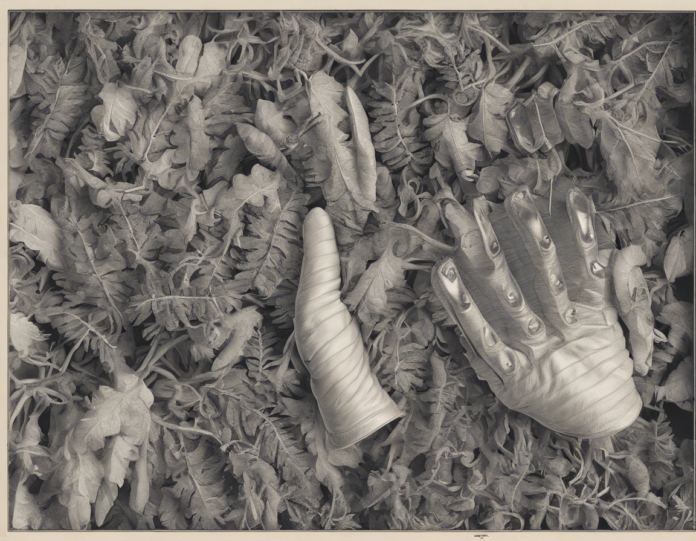Introduction:
When it comes to hand injuries, one common issue that affects many individuals is the glove strain. A glove strain refers to the overuse or strain on the muscles, tendons, and ligaments in the hand and wrist, often caused by repetitive motions or activities. This type of injury can be highly debilitating and may hinder a person’s ability to perform daily tasks or work efficiently. In this article, we will explore the symptoms, causes, and treatment options for glove strain to help individuals better understand and manage this condition.
Symptoms of Glove Strain:
1. Pain and Discomfort:
One of the primary symptoms of glove strain is pain and discomfort in the hand and wrist region. This pain may range from mild to severe, depending on the extent of the strain and damage to the tissues. It may be exacerbated by movement or specific activities that put strain on the affected area.
2. Swelling and Inflammation:
Individuals with glove strain may also experience swelling and inflammation in the hand and wrist. This can cause the affected area to appear swollen, red, and tender to the touch. Swelling is a common response of the body to injuries as it sends more blood and nutrients to the affected area for healing.
3. Stiffness and Limited Range of Motion:
Another common symptom of glove strain is stiffness and limited range of motion in the hand and wrist. Individuals may find it challenging to move their hand or wrist freely, and simple tasks such as gripping objects or making a fist may become difficult.
4. Weakness in the Hand:
Glove strain can also lead to weakness in the hand, making it challenging to perform tasks that require grip strength or dexterity. Individuals may notice a decrease in their ability to hold objects firmly or perform activities that involve fine motor skills.
5. Numbness and Tingling:
In some cases, individuals with glove strain may experience numbness and tingling in the hand and fingers. This sensation, also known as paresthesia, can be due to nerve compression or irritation caused by the strain on the hand and wrist.
Causes of Glove Strain:
1. Repetitive Motions:
One of the primary causes of glove strain is repetitive motions that put excessive strain on the muscles and tendons in the hand and wrist. Activities such as typing on a keyboard, using a mouse, or gripping tools for an extended period can lead to strain and overuse injuries.
2. Poor Ergonomics:
Poor ergonomics in the workplace or during daily activities can contribute to glove strain. Incorrect posture, improper hand positioning, and using equipment that is not suited to one’s body mechanics can increase the risk of developing hand and wrist injuries.
3. Overexertion:
Overexertion of the hand and wrist muscles during physical activities or work tasks can also lead to glove strain. Lifting heavy objects, performing repetitive tasks without breaks, or engaging in strenuous activities that require hand strength can strain the tissues in the hand and wrist.
4. Impact Injuries:
Impact injuries, such as a fall or direct trauma to the hand and wrist, can also cause glove strain. The force of the impact can damage the tissues, leading to pain, swelling, and decreased function in the affected area.
5. Poor Grip Strength:
Individuals with poor grip strength are at a higher risk of developing glove strain as their hand muscles may not be able to withstand the demands of certain activities. Weak hand muscles can easily become fatigued and strained when performing tasks that require grip strength or dexterity.
Treatment for Glove Strain:
1. Rest and Immobilization:
The first step in treating glove strain is to rest the affected hand and wrist to allow the tissues to heal. Immobilization using a splint or brace may be necessary to prevent further strain and promote recovery. Avoiding activities that exacerbate the pain is crucial during this phase.
2. Ice Therapy:
Ice therapy, also known as cold therapy, can help reduce pain, swelling, and inflammation in the hand and wrist. Applying an ice pack to the affected area for 15-20 minutes several times a day can provide relief and aid in the healing process.
3. Compression and Elevation:
Compression bandages can help reduce swelling and provide support to the injured hand. Elevating the hand above heart level can also help reduce swelling and improve circulation to the affected area, promoting faster healing.
4. Physical Therapy:
Physical therapy may be recommended to improve strength, flexibility, and range of motion in the hand and wrist. A therapist can guide individuals through exercises and techniques to help restore function and prevent future injuries.
5. Pain Management:
Individuals with glove strain may benefit from pain management techniques such as over-the-counter pain medications, topical creams, or corticosteroid injections to alleviate discomfort and improve quality of life during the recovery process.
6. Ergonomic Adjustments:
Ergonomic adjustments in the workplace or home environment can help prevent future instances of glove strain. Using ergonomic tools, maintaining proper posture, and taking regular breaks during repetitive tasks can reduce strain on the hand and wrist.
7. Surgery:
In severe cases of glove strain where conservative treatments fail to provide relief, surgery may be considered as a last resort. Surgical interventions such as tendon repair or release may be necessary to restore function and alleviate symptoms.
Preventing Glove Strain:
1. Maintain Proper Ergonomics:
Ensure that your workstation and daily activities are set up ergonomically to reduce strain on the hand and wrist. Use tools and equipment that promote a neutral wrist position and proper hand alignment to prevent injuries.
2. Take Breaks and Stretch:
Taking regular breaks and incorporating stretching exercises into your routine can help prevent muscle fatigue and overuse injuries. Simple stretches for the hands and wrists can improve flexibility and reduce the risk of strain.
3. Strengthen Hand Muscles:
Strengthening exercises for the hand and wrist muscles can improve grip strength and endurance, reducing the likelihood of developing glove strain. Using hand grippers, therapy putty, or resistance bands can help build hand muscle strength.
4. Use Proper Lifting Techniques:
When lifting objects, use proper lifting techniques to reduce strain on the hand and wrist. Bend at the knees, keep the object close to your body, and avoid twisting motions that can strain the wrist muscles.
5. Stay Hydrated and Eat Well:
Staying hydrated and maintaining a balanced diet can promote healthy tissues and muscles in the hand and wrist. Adequate hydration and nutrient intake can support tissue repair and reduce the risk of strain injuries.
FAQs (Frequently Asked Questions):
Q1: What is the difference between glove strain and carpal tunnel syndrome?
A1: Glove strain is an overuse injury that affects the muscles, tendons, and ligaments in the hand and wrist, while carpal tunnel syndrome is a specific condition caused by compression of the median nerve in the wrist. Both can cause pain and discomfort in the hand, but they have different underlying causes.
Q2: Can glove strain be prevented with exercise?
A2: Yes, strengthening exercises for the hand and wrist muscles can help prevent glove strain by improving grip strength and endurance. Incorporating regular hand exercises into your routine can reduce the risk of overuse injuries.
Q3: How long does it take to recover from glove strain?
A3: The recovery time for glove strain varies depending on the severity of the injury and individual factors. With proper rest, treatment, and rehabilitation, most individuals can recover from glove strain within a few weeks to a few months.
Q4: Are there any ergonomic tools to help prevent glove strain?
A4: Yes, ergonomic tools such as split keyboards, ergonomic mice, and wrist supports can help reduce strain on the hand and wrist during work or daily activities. These tools promote proper hand positioning and alignment to prevent injuries.
Q5: When should I seek medical attention for glove strain?
A5: If you experience severe pain, swelling, numbness, or difficulty moving your hand or wrist, it is recommended to seek medical attention. A healthcare provider can conduct a thorough evaluation and recommend appropriate treatment for your condition.
Conclusion:
Glove strain is a common hand injury that can significantly impact a person’s daily activities and quality of life. Understanding the symptoms, causes, and treatment options for glove strain is essential for managing this condition effectively. By implementing preventive measures, seeking timely medical attention, and following a comprehensive treatment plan, individuals can expedite the recovery process and reduce the risk of recurrent injuries. Remember, proper ergonomics, rest, ice therapy, physical therapy, and lifestyle modifications play a crucial role in the management of glove strain.













